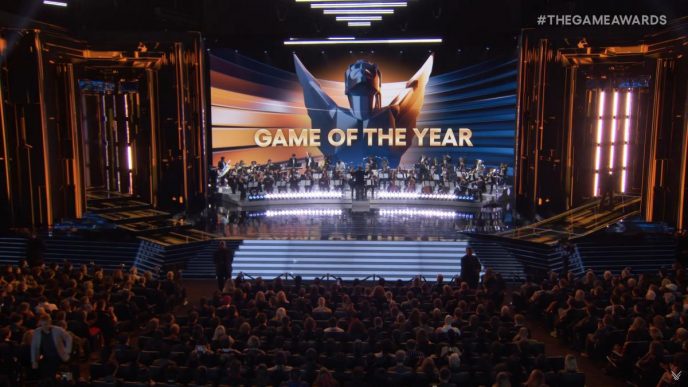This research is based on unique data collected from our proprietary audience of publisher, agency, brand and tech insiders. It’s available to Digiday+ members. More from the series →
This is a bonus behind-the-scenes look at our conversations with executives for Digiday’s 2024 Media Agency Report, which examined the current and future state of media agencies, from the perspective of total client spending and spending by media channel, and delved into the impact of retail media on the agency landscape.
Digiday hosted a focus group of eight senior media agency executives who oversee media investment at holding company-owned and independent media agencies to gather first-person accounts of client spending. Agencies and networks that participated in the focus group were:
- Assembly Global
- Horizon Media
- Magna Global
- Mediahub
- Novus
- PMG
- Publicis Media
- UM
What follows are their thoughts on CTV and streaming’s increasing appeal, the advice they’ve been sharing with clients about programmatic buying, and how they’re working more closely with creative agencies.
Lower CPMs and sports content increase CTV, streaming appeal
Streaming video and CTV is the third-most likely media channel (tied with display advertising) to benefit from larger client budgets in 2025, according to Digiday’s Media Agency Report. Agency focus group executives said that clients are shifting more ad dollars into streaming video and CTV due, in part, to CPM price cuts. Streaming platforms are also broadcasting more live sports content, which appeals to clients who want to reach those massive sports audiences.
“The rollbacks on the Peacocks and the Maxes and the ones that have launched relatively recently at very high price points, Netflix, … has made them much more affordable and headed in the right direction in terms of pricing, and an adequate replacement for the efficiency of linear TV.” — David Campanelli, chief investment officer at Horizon Media
“On the CTV side, with the consolidation and mergers somewhat complete … we’re really seeing investment scale, just knowing the users are tied in from a content perspective and contextual relevancy. So, there is a moment where we’re really seeing a spotlight come in from the streaming platforms just because they want to be in front of the content libraries that said platform has.” — Natalee Geldert, head of brand media at PMG
“There’s increased interest [in CTV], even for clients that weren’t always big sports players. Sports as a reach vehicle, as an attention vehicle, and then the streamers start playing in the sports space, that just helps the CTV conversation. … Everyone’s looking for high attention, high engagement and a price point that works in their business economics. CTV is certainly, with the supply increase, starting to come down in those economics, which makes it easier to spend a higher volume in CTV.” — Shelby Saville, chief investment officer of Publicis Media
“The sports point is a good one because we definitely have advertisers that may be female-targeted advertisers that are buying into sports that historically haven’t, but it’s the place to get reliable, live GRPs [gross rating points] so that’s a good call-out. … Every category — whoever bought TV — their money is going to a lot of places, but it’s obviously going to CTV fairly heavily. It’s not a category-specific media type anymore. It’s really broad at this point. — David Campanelli, chief investment officer at Horizon Media
Given the flood of less-expensive CTV and streaming ad inventory, Digiday asked the media agencies we spoke with if they have been seeing more flexible buying terms from other media channel sellers who don’t want to lose profits to CTV and streaming. Linear TV ads, in particular, are generally bought months in advance during the upfront buying cycle, typically making them less flexible.
“The flexibility is improving. With increased competition, sellers are recognizing that marketers are making decisions closer to campaign launch; and with increased competition from other media channels with better flexibility, sellers are willing to be more flexible across both their linear and digital terms. At this point, there’s so much competition out there from a digital video perspective that they have to be.” — Allie Kallish, evp of strategic investment and marketplace strategy at Magna Global
“Because their [sellers’] business is built on having a set number for the year, it has been a challenge to get some to come around to [the idea that] this is just the way it works now. … We’ve had to encourage publishers to look at spend trends over a number of years vs. thinking one line item is going to stay static all year. Those days are dying, and the clients require this. There’s so much choice out there that we would be doing our clients a disservice if we weren’t helping them navigate the flexibility that they need. And that’s choiceful decisioning that goes beyond price when you’re trying to decide on the right partners.” — Shelby Saville, chief investment officer of Publicis Media
“It was also the dynamic of the newer players, like an Amazon, wanting to move toward more traditional cancellation option terms in the upfront and buyers not accepting that. Because they’re in the digital space, [buyers expect] they’re going to get digital flexibility, when they [the sellers] were looking for more traditional option terms. They were trying to go the other direction. It didn’t work out so well.” — David Campanelli, chief investment officer at Horizon Media
“A lot of companies, particularly in the social and OLV [online video] space, are offering highly flexible partnership models that enable clients to unlock value in exchange for spend endeavors, not firm commitments. However, it often requires a high volume of spend or significant year-over-year growth to unlock meaningful value, which may not be palatable for some clients, firm commitment or not.” — Marcy Greenberger, evp and managing partner at UM
Agencies take a holistic approach when buying programmatically
This year has been a tough one for programmatic marketers. Uncertainty around Google’s plans related to third-party cookies in Chrome has driven marketers to look at alternate data sources. Inventory quality issues on made-for-advertising sites have eaten away at media budgets. And AI has brought its own set of unique issues for marketers, many of whom are taking a cautious approach to using the burgeoning technology. Even with these compounding issues, programmatic display advertising remains the most-used marketing channel, according to Digiday’s CMO Strategies series, most likely due to its cheap reach and higher ROI. Digiday asked media agency execs to what degree automated and programmatic options are creeping into how they buy inventory for their clients.
“I wouldn’t say programmatic is automated. As much as everybody says it is, I would call it more algorithmic and audience-based. Clients are realizing that a strategic audience is really important and finding those audiences where they are is better for whatever that they’re selling.” — Allie Kallish, evp of strategic investment and marketplace strategy at Magna Global
“You’ve got to look at the total package when you buy a programmatically. So, there are the media costs and then there are the data costs. Depending on how many layers you add, the data costs can approach the media costs. You can spend half your CPM in data costs. There is a concept of over-targeting that you have to be careful of too. Because all of that is good, but at what cost, is what we tell our clients.” — Rob Davis, president and CMO at Novus
“From the outside, it’s often thought, you can buy direct or you can buy open-exchange programmatic. But there’s a growing and large middle ground of deals that we are setting up in the upfronts, negotiating the up-front price points potentially, and then executing programmatically. That’s the area that’s going to grow significantly over time. It’s a blend of the two, honestly. It’s essentially direct buying, or at least it’s set up in an upfront or ahead-of-time format, but executed programmatically.” — David Campanelli, chief investment officer at Horizon Media
“We’re definitely seeing substantial growth [in programmatic], but it’s really focused on buying more premium inventory programmatically, because it’s about having more control. It’s about being able to manage frequency holistically and having everything in one platform so you can see your audience reach across partners and across channels. It’s not the open exchange. It’s not the remnant inventory where we’re seeing a lot of the growth. It’s really buying the quality premium in programmatic fashion.” — Marcy Greenberger, evp and managing partner at UM
Historically, media agencies and creative agencies have worked separately on behalf of their clients. Some advertising agencies (usually standalone full-service ones) offer in-house media services, but most spun out their media departments during the late 1990s or early 2000s as separate businesses alongside the main creative agency. In simple terms, this means that clients pay separately for the creation of advertising and the booking of media space.
However, as more brands look to consolidate their agency assignments, the two disparate sides of the business are once again intermingling.
“We’re very closely [working with creative agencies]. Particularly when you think of bringing brand and performance together, it’s not one or the other. … So, making sure that we’re building that relationship from day one. We have our own internal ways of handling creative [Stagwell-owned creative agencies], but in working with other partners, it’s so important to build that relationship and to make sure that we are literally in lockstep, being briefed at the same time, having all of that from day one.” — Kendra Mazey, chief client officer at Assembly Global
“The intention is there and we do our best to try to align it. But, depending on the client, sometimes there’s not enough money to make that work and sometimes there’s less of an appetite to make that work. It’s kind of a crapshoot in terms of when we’re actually able to get creative that’s truly resonated. Some clients do a very good job at trying to show adjacency by signing on relevant talent, making their ads look and feel aligned. Sports is one area where that really comes to life, but it’s clear that those specific advertisers are investing in the creative to make those partnerships come to life, or they’ve made a very intentional strategic choice to invest in the creative. That’s the ideal state, but very few clients really have the budgets to make that possible.” — Marcy Greenberger, evp and managing partner at UM
“A soapbox that I’m up on a lot is asking clients to never forget what a big lever creative really is. I can use all the data at my disposal. I can be as nerdy and as smart with all the media, but if we’re not thinking about the message, it’s not going to perform. … I’ve had a lot of clients lately really digging into DCO [dynamic creative optimization] again as a lower-cost turnkey option to map some of the messaging. … With fragmentation, we’re realizing that we have a lot more opportunities to tailor creative. … We’re not building scale at the rate we might have been before, but we have always known we were buying more impressions than we needed with linear. Now we’re getting more specific and targeted, and that’s a huge creative opportunity.” — Shea Kelly, chief client officer at Mediahub














